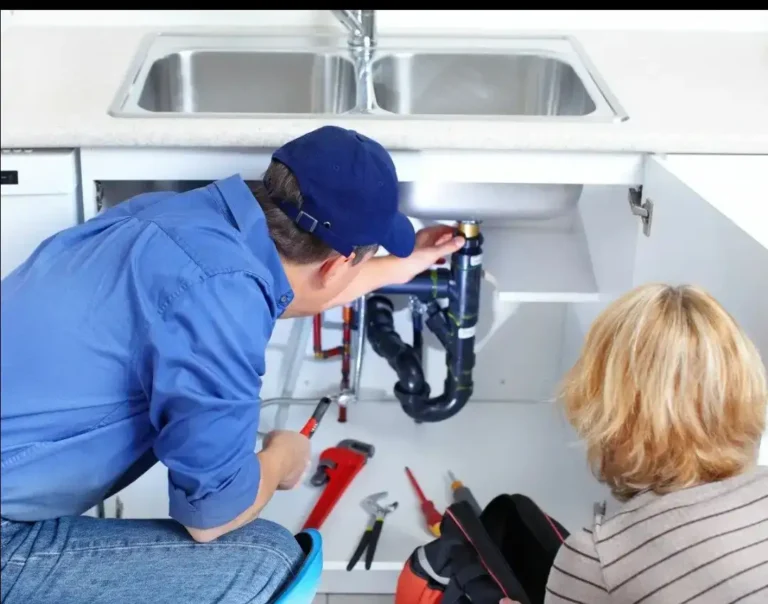Managing multi-unit apartment buildings presents an ongoing set of responsibilities that extend far beyond routine maintenance. Among the most disruptive issues a property manager can face is a plumbing emergency. Unlike a single-family home, an apartment building contains multiple tenants who rely on consistent water flow, working toilets, and efficient drainage. A single burst pipe or sewer backup can affect multiple floors within minutes, leading to property damage, tenant displacement, and financial strain.
Being prepared to handle these plumbing emergencies quickly and efficiently is critical for tenant satisfaction and long-term property value. Whether the property is in a high-rise or a smaller complex, having access to Commerce City emergency plumbing services can make a significant difference in response time and overall impact.
We will explore how apartment building managers can strengthen their emergency response and prevent common plumbing disasters through preparedness, clear protocols, and strong relationships with reliable plumbing providers.
What Property Managers Must Know About Emergency Plumbing Response
1. Understanding the Unique Risks in Apartment Plumbing Systems
Apartment buildings operate on complex plumbing systems that serve numerous tenants simultaneously. Because of this scale, even minor issues can escalate quickly. For example, a clog in a shared main drain may back up water into several lower-level apartments. Aging pipes, often concealed behind walls and floors, can leak undetected for days, leading to mold, structural decay, or tenant complaints. Unlike single-dwelling homes where isolated plumbing failures are usually self-contained, multi-family buildings are interdependent.
If one unit experiences a blockage or water failure, it often impacts surrounding units. Property managers need a working knowledge of these systems—not to perform repairs, but to detect early signs of trouble. Monitoring water pressure, scheduling inspections, and staying alert to tenant reports are essential. Timely identification of irregularities can prevent emergencies altogether or at least mitigate the damage. These buildings require more than passive oversight—they require proactive plumbing risk management at every level.
2. Establishing an Emergency Plumbing Protocol
When a pipe bursts or a sewage line clogs at midnight, the first few minutes are critical. Every property manager should have a clearly defined emergency plumbing protocol. This includes having a reliable on-call plumber available 24/7, ensuring that building staff are trained to shut off main water valves, and having up-to-date contact information for tenants and emergency responders.
The protocol should include a step-by-step process for managing tenant communication, documenting the incident for insurance, and assessing whether evacuation is necessary. Creating this emergency response plan before anything goes wrong ensures everyone knows their role in a crisis.
Property managers should review this protocol regularly and conduct drills with building staff when possible. This is especially important in high-rise buildings where one plumbing failure can cascade downward quickly. Tenants also appreciate transparency, so providing a guide on what to do in a plumbing emergency fosters trust and cooperation.
3. Building Relationships with Reliable Plumbing Services
In a plumbing emergency, time is everything. Property managers who scramble to find an available technician only after disaster strikes may face delays and higher costs. Instead, it’s wise to cultivate an ongoing relationship with a dependable local plumbing company that offers emergency service. This ensures rapid response and the advantage of working with professionals familiar with your building’s systems. Scheduling regular maintenance checks with the same provider can further reduce emergency risk, as the plumbers can track wear and tear over time.
These relationships often yield faster service, more accurate assessments, and occasionally priority scheduling during widespread emergencies such as freezes or floods. A well-prepared manager keeps records of previous plumbing issues, system layouts, and water shut-off maps ready for the plumber’s use. Clear communication and collaboration between the property manager and the service provider reduce confusion and downtime when things go wrong.
4. Preventative Maintenance to Minimize Emergencies
One of the most effective ways to avoid emergency plumbing situations is through a structured preventative maintenance plan. Property managers should schedule regular inspections of water heaters, sump pumps, sewer lines, and shut-off valves.
This routine helps identify potential failures before they become urgent. Small signs like water stains on walls, noisy pipes, or slow drains should not be ignored, as they often point to larger underlying issues. Investing in pipe relining or updates in buildings with older infrastructure can prevent future disasters.
Seasonal changes also bring added risk—frozen pipes in winter or pressure surges in summer can both lead to burst lines. A maintenance checklist should include flushing water heaters, testing backflow prevention devices, inspecting for corrosion, and ensuring proper insulation of pipes in colder climates. Tenants can also be engaged in preventative efforts by reporting leaks immediately and being educated on what not to flush or pour down drains.
Emergency plumbing situations in apartment buildings are not just technical issues—they are management challenges that test preparation, leadership, and responsiveness. Property managers who understand the unique risks of multi-unit systems, establish clear protocols, build strong relationships with plumbing professionals, prioritize maintenance, and communicate effectively with tenants are far better equipped to handle such crises.
We have explored how each step is crucial in minimizing damage, reducing costs, and maintaining tenant satisfaction during unexpected plumbing failures. Emergencies are inevitable, but the level of disruption they cause can be controlled. In this field, preparedness isn’t just a precaution—it’s an essential strategy for long-term success.
